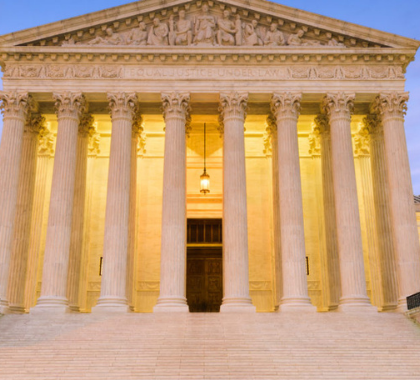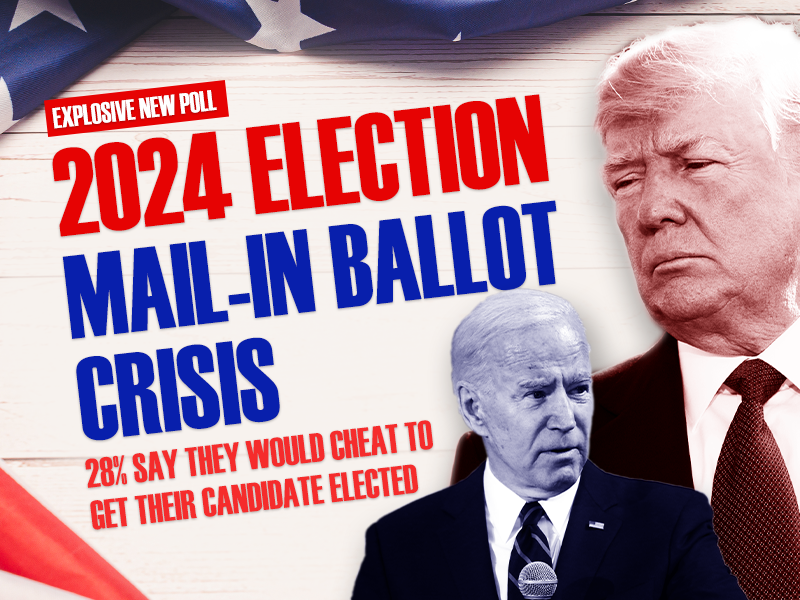The Supreme Court term that began in October promises to be one of the most significant terms in many years. Below, I describe the most significant cases. In coming weeks, I will go into more detail about each of these cases and the impact and implications these cases have. As the Court issues its opinions, I will discuss the opinions and any concurrences and dissents.
- Dobbs v Jackson’s Women’s Health Organization
This case is an appeal from a decision in the 5th Circuit which ruled that a Mississippi law (the Gestational Age Act) that banned all abortions after the 15th week of pregnancy – except in the case of a medical emergency or severe fetal abnormality, and with no exception for pregnancies resulting from rape or incest – is unconstitutional. In a brief filed by the Mississippi Attorney General, he argued that Roe v Wade should be reversed, that Roe v Wade was “egregiously wrong,” and the right to abortion had “no basis in text, structure, history or tradition.”
Under current Supreme Court precedent in Roe v Wade decided in 1973 and Planned Parenthood of Southeastern Pennsylvania v Casey decided in 1992, abortion cannot be prohibited or restricted before fetal viability and any regulation of abortion before fetal viability cannot create an “undue burden” on a woman seeking an abortion. The question before the Supreme Court is whether all pre-viability abortion restrictions are unconstitutional.
The Supreme Court could reverse Roe v Wade, or expand the ability of states to regulate abortion before fetal viability, or discard fetal viability as a standard in reviewing laws that regulate or restrict abortions. This case will also determine if Roe v Wade is “settled law” or a “super precedent,” and thus should not be reversed because of reliance on it over a long period of time.
The concept of “settled law” or “super precedents” currently restrains the willingness of the Supreme Court to reverse other precedents even when those precedents are deemed wrongly decided. While the potential impact of a decision in this case on abortion law is clear, the possibility of the Court reconsidering other longstanding precedents could have a major impact in many areas of the law. Oral argument is scheduled for December 1.
- Garland v Gonzalez
This case is an appeal from a decision of the 9th Circuit that held that a detained illegal alien is entitled by statute to a bond hearing after six months of detention, at which time the US would have to prove the detained alien was a flight risk or danger to the community. In addition to this issue, the Supreme Court instructed the parties to brief whether there was jurisdiction for class-wide injunctive relief. The significance of this case is its potential impact on the enforcement of federal immigration law. If the Supreme Court rules in favor of the illegal alien and grants class-wide injunctive relief, the immigration enforcement system will be overwhelmed. Oral argument is scheduled for January 11, 2022.
- U.S. v Zubaydah
This case is an appeal from a decision of the 9th Circuit which rejected an assertion by the US that the state secrets privilege – a common law concept that allows the government to withhold evidence from judicial review, or disclosure to the target of an investigation, or the general public if the government determines such review or disclosure might be harmful to national security. In this case, the government withheld the evidence allegedly supporting their investigation. The evidence allegedly indicated the possible use of torture or enhanced interrogation and the basis of the suspicions that the target was involved in activity that threatened national security.
The case involves former CIA contractors who engaged in clandestine CIA activities including enhanced prisoner interrogations. Zubaydah claimed he had been tortured for years at CIA black sites. The CIA argued that it needed this broad authority to protect sources and methods. A decision in this case in favor of the CIA could allow the CIA to act free of judicial oversight. The Court could, alternatively, require disclosure of the evidence in camera (meaning in secret). Oral arguments were made on October 6. A decision in this case and in FBI v Fazaga (discussed below) should be considered together.
- FBI v Fazaga
This case is an appeal from a decision of the 9th Circuit which held in applying the state secret privilege to covert evidence gathered by the FBI, the trial Judge should have reviewed the evidence “in camera” (in secrecy). The Foreign Intelligence Surveillance Act (FISA) Section 1806(f) governs the use of information obtained or derived from electronic surveillance for foreign intelligence purposes. FISA expanded the surveillance power of the U.S. government.
This section (1) authorizes the use of privileged information in considering a challenge to the lawfulness of government surveillance; (2) requires notice to the target before obtained evidence can be used in a legal proceeding; and (3) permits the target to make a motion to suppress the evidence obtained. The question for the Court is whether this Section of the FISA Act displaces the state secret privilege. Oral arguments were made on November 8.
- York State Rifle & Pistol Association v Brand
This case is an appeal from a decision of the 2nd Circuit. The Circuit Court upheld the constitutionality of a New York statute that provides that an application for a license to carry a gun outside the home can be conditioned on the applicant establishing “proper cause” to do so. Under the New York statute, licensing authorities have discretion to determine “proper cause.”
New York courts have generally held “proper cause” requires the applicant to have a unique and heightened need for self-protection compared to the public generally. Similar state law restrictions have been held unconstitutional in other circuits, and thus there is a split among the circuits on the issue. A decision in this case will determine if the right to bear arms under the Second Amendment recognized in the Heller case extends to carrying a gun outside the home.
This is the most important Second Amendment case in a generation. A substantial number of amicus curiae briefs have been filed by parties both supporting opposing the New York statute. Oral arguments were given on November 3. Many observers have said the justices appeared to be skeptical of the oral arguments in favor of upholding the constitutionality of the New York statute.
- Carson v Makin
This case is an appeal from a decision of the 1st Circuit upholding a Maine statute which made state funds available for public and private school students enrolled in schools inside and outside the state but prohibited funds for students in schools that provide religious (or sectarian) instruction.
The Supreme Court has previously held the denial of state aid to religious schools (i.e., schools affiliated with or sponsored by religious institutions) was unconstitutional, but the Court left open the question whether providing funds to students attending schools providing religious instruction could constitutionally be excluded from state programs generally available to students. Note the distinction between the status of the school and the instruction provided by the school.
Not surprisingly, most schools that are affiliated with or sponsored by religious institutions provide religious instruction. A decision will either be a huge victory or a setback for proponents of school vouchers. Oral arguments are scheduled for December 8.
- West Virginia v EPA
This case is an appeal from the D.C. Circuit. On October 23. 2015, the EPA issued a final rule known as the Clean Power Plan (CPP). The CPP was intended to establish a national regulatory standard to address greenhouse gas emissions from power plants. Implementation of the CPP was initially stayed by the Supreme Court and remanded to the District Court for further consideration. In January of this year, the D.C. Circuit revived the CPP. West Virginia and a group of energy companies brought suit challenging the plan on the basis that it exceeded the scope of authority granted to the EPA under the Clean Air Act.
The argument of some of the parties challenging the authority of the EPA to adopt the CPP goes beyond the plan and questions the scope of EPA regulations generally. These parties are challenging a doctrine known as the Chevron doctrine. Application of the Chevron doctrine gives regulatory bodies broad discretion in adopting regulations if there is a rational basis to support the regulation under the statute being interpreted by the regulatory body. The Chevron doctrine is known as the delegation rule since it rests on the proposition Congress delegated broad power to the regulatory agencies. A decision in this case will determine the scope of EPA authority to issue regulations that could reshape the electrical grid and decarbonize the whole economy.
If the Court were to reverse or limit the application of the Chevron doctrine, the impact could invalidate thousands of regulations adopted by the EPA and other government regulatory agencies. Congress would then have to decide whether to grant regulatory agencies specific authorization or adopt legislation to address specific issues and policies rather than punting the matters to the agencies. This could put a stake in the heart of the regulatory state. Proponents of the Chevron rule argue that decisions are best left to experts in the regulatory agencies rather than in Congress because decisions by Congress are based on political considerations.
- Cassirer v Thyssen Bornemisza Foundation
This case is an appeal from a decision of the 9th Circuit requiring claims under the Foreign Sovereign Immunity Act to be determined based on the law of the jurisdiction where the court is sitting, including the choice of law rules of such jurisdiction. The plaintiff argues that federal common law choice-of-law rules should govern. The case involves a painting by Pissarro allegedly stolen (or sold for a nominal amount under duress and threat) from a Holocaust survivor and now “owned” by the foundation. The plaintiff is a descendant of the Holocaust survivor from whom the painting was allegedly stolen and is a California resident.
The Appellate Court ruled that under California choice of law, Spain’s law would control, and determined the foundation to have “encubridor” status (essentially, an accessory after the fact to the theft but not an actual participant in the theft), and therefore not required to return the painting. A decision in this case could have far-reaching consequences in the art world and beyond Oral arguments have scheduled for January 18, 2022.





